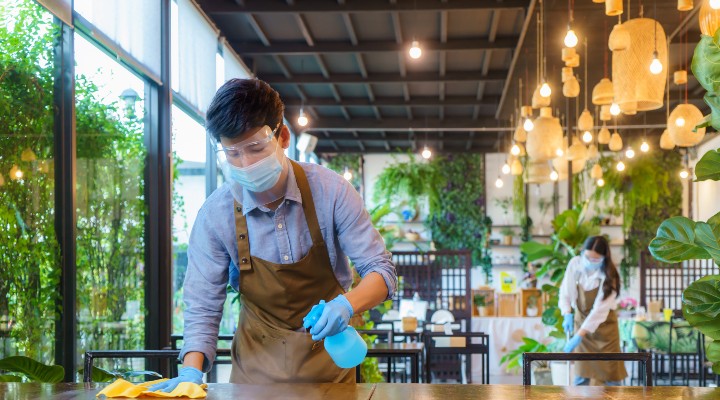Few areas of the economy have been as affected by Covid-19 as the retail sector. Non-food retailers have been forced to close, switch to online or click-and-collect, and switch back again. Food retailers became essential frontline workers and dealt with a time of booming sales and insatiable demand. There has been volatility, uncertainty, frustration, and panic buying. But despite the unpredictable environment, retailers saw staff continue turning up to work, day after day. The debilitating abse
bsenteeism predicted based on US and UK experiences didn’t happen in Australia. Incredible resilience surfaced in workplaces, backed up in many cases by a new style of compassionate leadership. As we now look ahead to 2022, there is an overarching sense this year will be one of regrouping and rebuilding as the retail sector rebounds. People leaders will be considering how these market conditions can be harvested in a sustainable way.
Speaking to a number of human resources personnel/people leaders across the retail sector, three key workforce considerations for 2022 emerged.
1. Burnout
Two of Australia’s biggest cities, Sydney and Melbourne, emerged from extended lockdowns only late last year, and are still collectively processing the challenges, mental health and otherwise, this caused. Immediately following the lockdowns, many retail staff launched straight into peak trading season, which was amplified due to pent up demand and an exuberant return to physical retail spaces.
Retailers will undoubtedly want to take advantage of the predicted rebound in retail spending. However, it will need to be done in a sustainable way to avoid further burnout, absenteeism, and attrition. In the short term, it will be important to engage and prepare teams adequately for what’s ahead, and to generate excitement about what can collectively be achieved. Communications should focus on inspiring teams by connecting to organisational purpose, ambitions, and vision. At a tactical level, leave and shifts will need to be actively managed for maximum coverage but also to allow time for personal restoration.
2. Culture
New cultural attributes that have formed within organisations over the past two years have, in many cases, created unique levers for high performance and provided a platform for organisational resilience. Many retailers saw new leadership styles emerge that were more compassionate, vulnerable, and inclusive. This style embedded itself in organisational values and behaviours and created motivation for people to uphold momentum. At the same time, significant efforts were made to create and maintain connections across dispersed teams and bridge the (real or perceived) gap between frontline employees and support employees, executives, and middle managers. Creating cohesive teams, which are so critical to successful retail environments, will drive improved wellbeing, resilience, and performance. Retailers should be looking to define their cultural drivers and consciously nurture those cultural elements that carried them through the pandemic, into 2022 and beyond.
3. Retention
ABS data shows that from February 2020 to August 2022, job vacancies across the retail sector rose by nearly 78 per cent. The retail sector has not been immune to the skills shortage that is being felt across the economy and many people leaders reported emerging signs of the so-called Great Resignation, where employees have begun reassessing their priorities and questioning their career ambitions.
This all makes a strong case for focusing on retaining employees and keeping turnover as low as possible. Many retailers are starting from a strong position, having reported vastly increased engagement scores during 2020 – particularly at the store manager level – that continued to rise through the pandemic. Efforts to maintain this momentum have focused on reward and recognition programs, with a trend towards personalisation and wellbeing, even in large workforces. For example, in place of generic gift cards, high-performing individuals receive a voucher for their favourite local restaurant, or a team receives a series of Friday afternoons off. This generates maximum impact for comparably low cost.
Meanwhile, the tight labour market has led organisations to focus increasingly on building their internal talent pipelines to fill roles rather than recruit. They are seeking high-potential individuals and carving out career and development pathways. Not only does this fulfil a role requirement, it deepens loyalty and engagement across the organisation.
For those organisations looking to recruit, competition is fierce. Even retailers that have historically attracted top candidates effortlessly are reporting difficulties. Many organisations report being let down by their recruitment processes. Candidates are awash with offers and organisations are losing out to competitors with more seamless processes that were able to make genuine offers quicker. Retailers need to optimise and streamline every step of their recruitment process to be competitive.
With a predicted rebound in the sector this year, retailers should use this unique opportunity to shape workforce outcomes deliberately and consciously for a sustainable 2022.

